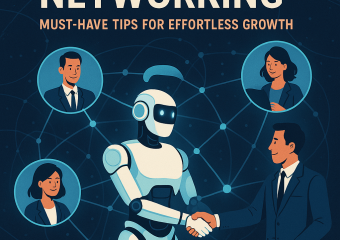AI Automation: Transforming Google Ads as We Know It
Introduction to AI Automation in Google Ads
AI automation has revolutionized the way businesses advertise online, particularly through platforms like Google Ads. By leveraging artificial intelligence and machine learning algorithms, advertisers can now optimize their campaigns in real-time, target specific audiences more effectively, and personalize their messaging to drive better results. This shift towards AI automation in Google Ads has not only streamlined the advertising process but has also significantly improved performance and ROI for businesses of all sizes.
The Impact of AI on Google Ads Performance
One of the key benefits of AI automation in Google Ads is its ability to improve campaign performance. By analyzing vast amounts of data and making data-driven decisions, AI algorithms can optimize ad placements, bids, and targeting to ensure that ads are shown to the right audience at the right time. This level of precision and efficiency has led to higher click-through rates, lower cost-per-click, and increased conversions for advertisers. In fact, according to a study by WordStream, businesses that use AI in their Google Ads campaigns see a 71% increase in conversion rates on average.
Furthermore, AI automation can also help advertisers identify trends and patterns in consumer behavior that may not be immediately apparent. By analyzing user interactions and engagement metrics, AI algorithms can predict which ads are likely to perform well and adjust campaign strategies accordingly. This proactive approach to campaign management can help businesses stay ahead of the competition and capitalize on emerging opportunities in the market.
Enhancing Targeting and Personalization with AI Automation
Another significant advantage of AI automation in Google Ads is its ability to enhance targeting and personalization. By analyzing user data such as search history, browsing behavior, and demographic information, AI algorithms can create highly targeted ads that are tailored to individual preferences and interests. This level of personalization not only improves the user experience but also increases the likelihood of conversion.
For example, Google’s Smart Bidding feature uses machine learning to automatically adjust bids based on factors such as device, location, and time of day to maximize conversions. This level of granular targeting ensures that ads are shown to the most relevant audience, increasing the chances of engagement and conversion. As a result, businesses can reach their target customers more effectively and drive better results from their advertising campaigns.
Future Trends in AI Automation for Google Ads
Looking ahead, the future of AI automation in Google Ads is promising, with new technologies and features continuously being developed to further enhance campaign performance. One emerging trend is the use of AI-powered chatbots to engage with customers in real-time and provide personalized recommendations based on their preferences. This level of interactivity can help businesses build stronger relationships with their audience and drive more conversions.
Additionally, advancements in natural language processing (NLP) and image recognition technology are enabling advertisers to create more engaging and visually appealing ads that resonate with consumers on a deeper level. By analyzing text and visual content, AI algorithms can generate ad copy and creative assets that are more relevant and compelling, leading to higher engagement and conversion rates.
In conclusion, AI automation is transforming Google Ads as we know it, revolutionizing the way businesses advertise online and driving better results across the board. By leveraging the power of artificial intelligence and machine learning, advertisers can optimize their campaigns, enhance targeting and personalization, and stay ahead of the competition in an increasingly competitive digital landscape. As technology continues to evolve, the future of AI automation in Google Ads looks bright, with endless possibilities for innovation and growth.







